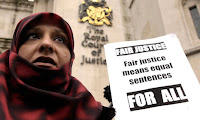There has been progress, not least the stand residents took against the EDL last year, but threats from the far right remain.
Ten years ago today Bradford witnessed race riots that lasted three days and brought the issue of race relations in the city to the country's attention. Bradford became known as a "racial tinderbox" where the city's large Asian community was estranged and at odds with the white working class.
You could see the troubles coming as rioting spread across the north from towns on the other side of the Pennines such as Burnley and Oldham. There were the largely forgotten riots of 1995, which should have acted as a warning signal. After those disturbances, Asian residents complained about a lack of opportunities and growing unease about relationships with the police and the white working class. Those calls were mostly ignored, the National Front took advantage and six years later tensions boiled over again.
I was a 17-year-old student at the time, and like many people in the city was shocked to see Manningham turned into a battleground. I remember picking up the Telegraph and Argus and seeing the faces of young men I'd played against in a football semi-final a few months earlier on the front page as wanted troublemakers. Harsh sentences followed for the Asian offenders and the city woke up to the fact that it had been sleepwalking into segregation for more than 30 years.
There was a definite change in the city as the initial shock of the riots turned to disgust and even hatred as people surveyed what "they" had done to "our" city. The fallout continued with the BNP gaining council seats in predominantly white areas like Queensbury and Keighley as far-right groups took advantage of the troubles to reinforce the "them and us" attitude. Lord Ouseley's report and the Cantle report followed and laid out the drastic action that needed to be taken to counteract the effects of segregation in the city and others like it.
But the anniversary of the riots isn't the best indicator of how far the city has come when dealing with race relations. That date came on 28 August 2010 when the English Defence League (EDL) brought 700 supporters to the city. The event had been talked about for months and when the static protest started the group faced opposition from a wide range of residents. It was a display of unity which largely went unreported, the focus instead being on the EDL's clashes with the police. It was the toughest test Bradford's communities had faced since 2001 and people from all over the city made sure no one group was left to stand up to the far right alone.
The BNP is no longer represented on the council and now Bradfordians are focused on new challenges such as the lack of development in the city centre, which literally left a hole in the heart of the city, and fewer job opportunities after the area's financial services industry was hit by the economic downturn. When Chris Morris chose the city's 16th International Film Festival as the place to premier his controversial film Four Lions, which was about a British group of suicide bombers, I was delighted to see someone like Morris in the city. But even more delighted that there wasn't trouble after the premier, especially considering one of the 7/7 bombers, Shehzad Tanweer, was born in Bradford. It showed me that perhaps now Bradfordians of all races are able to examine even the most uncomfortable aspects of life in the city.
Bradford still faces challenges when it comes to relations between different communities. The white flight that occurred in areas like Manningham is being repeated, this time with Asian middle-class families moving out to areas like Heaton and eastern European migrants taking their place. The school system is still a source of segregation, with many containing a majority of pupils from either white or Asian backgrounds. But progress is being made with exchange programmes and a greater awareness of how without early integration a "them and us" attitude can develop.
Many in the city are happy about the progress that has been made but as the far right regroup again in the form of the EDL, Bradfordians are well aware that their unity will be tested again and so will the city's race relations.
The Guardian
Who We Are
Our intention is to inform people of racist, homophobic, religious extreme hate speech perpetrators across social networking internet sites. And we also aim to be a focal point for people to access information and resources to report such perpetrators to appropriate web sites, governmental departments and law enforcement agencies around the world.
We will also post relevant news worthy items and information on Human rights issues, racism, extremist individuals and groups and far right political parties from around the world although predominantly Britain.
We will also post relevant news worthy items and information on Human rights issues, racism, extremist individuals and groups and far right political parties from around the world although predominantly Britain.

